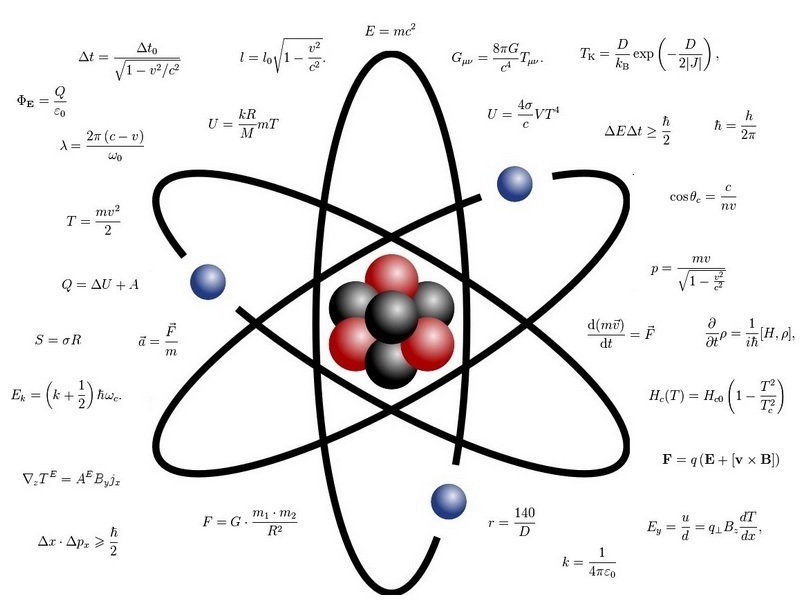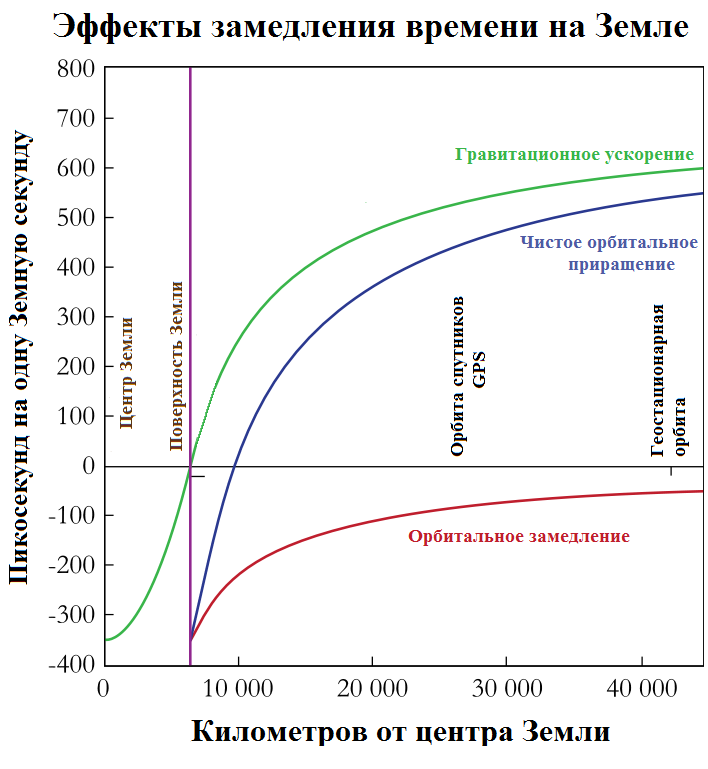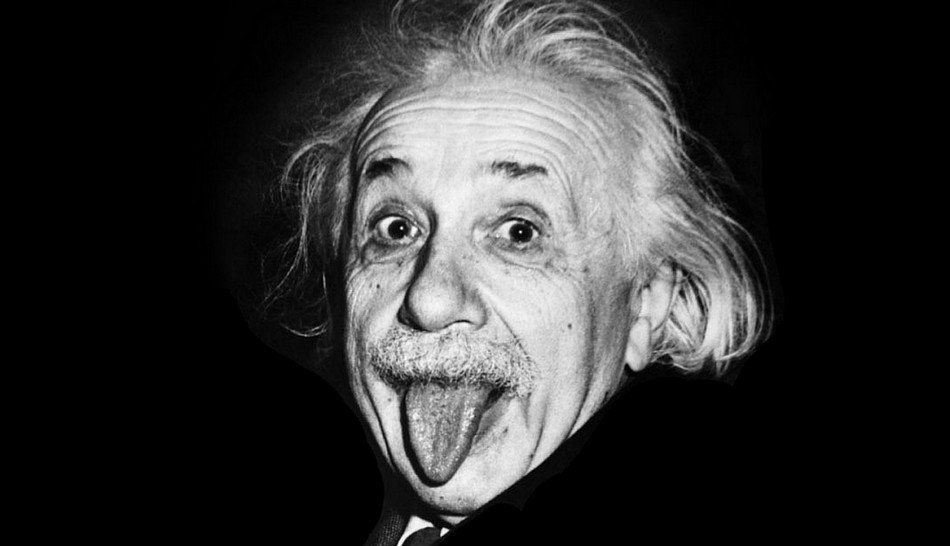Physical laws in numbers - small quantities

Many are familiar with the fact that the influence of certain laws of physics on our world, located at the crossroads of the microworld of elementary particles, and the macrocosm of stars and galaxies, can be very small, but not everyone knows how much. Here I have collected several examples that show how little influence they can have on us.
Classical mechanics
The most famous example here is the law of universal gravitation, we feel the attraction to the Earth only because it has enormous weight. And with what force do two people attract each other? Take for example two people with masses of 70 kg and the distance between them - for one meter, the result is a force of 33.3 micrograms, or more precisely - 3.33 × 10 -8kilogram-force (kgf). The small value of this force was the reason for the very inaccurate (by the standards of physics) measurement of the gravitational constant G:

You can still calculate the "first cosmic velocity" for the human body, if you take 30 cm for the "radius", the speed will be 0.125 mm / s, and for the second cosmic velocity - 0.176 mm / s, respectively, these speeds could still be measured in space - but in reality the influence of the Earth and other heavy bodies near you. as well as the pressure of light and solar wind threatens to ruin the whole experiment.
Remember the saying, “give me a fulcrum, and I will turn the Earth”? We will try to calculate that this will require:
Even if we do not take into account the effects of the gyroscope from the rotation of the Earth (which will not allow it to be “pushed” so easily from the current direction of rotation), a ball with a mass of 5.97 × 10 24 kg and a radius of 6371 km has a angular momentum of 9.69 × 10 37 kg × m², taking into account the dimensionless coefficient, which is 0.4 for the sphere, and 0.335 for the Earth (uneven density affects, but it does not grow linearly - at least there is one “jump” in density and other “zigzags” that complicate calculations), the result is a value of 8.12 × 10 37 kg × m².
The power developed by a person over a long period of time, according to approximate estimates, is 100 watts (taking into account the efficiency of 20-30%). If we take a person’s life expectancy of 80 years and a wake time of 16 hours, we will get a total released energy of 1,683 × 10 11 J. The final angular velocity from such work will be: 2.04 × 10 -17 rad / s, and will allow “ turn the Earth ”(rotate it 180 degrees) during the“ total ”of 248 million years. Well, your distant descendants will appreciate your “Sisyphean Labor”).
Effects of the theory of relativity
Going into the Earth’s orbit (for example, take the ISS - 7.66 km / s, at the moment there is actually nothing more to take), we get a time dilation due to the developed speed of 3.26 × 10 -10%, which during a flight of one year will give a deceleration of 0.0103 seconds.
But this is only one of several effects, the other - the “acceleration” of time from exiting the Earth’s “gravitational well” (the effect of gravitational time dilation) loses some of its strength. The total value of this effect is 0.0219 seconds per year, and the sum of the last two looks like this: A

person is not able to notice these effects, but for navigation and measuring time using an atomic clock, this is already a big problem, since their internal accuracy can be orders of magnitude higher than these effects. And these corrections are already used in GPS and Glonas satellite navigation systems, and all currently under construction , too.
According to the COBE telescope, our velocity relative to the relict radiation is 627 ± 22 km / s. This gives a time dilation of 2.18 × 10 -7 %, or 0.069 seconds per year from this effect, which is not so much, but during the Earth’s existence (4.5672 ± 0.0006 billion years), this should have “taken away” the clock by about 3650 years.
This leads to another interesting effect - as I already wrote , our movement in space is rather complicated, let's take one of its components - the rotation of the Earth around the Sun, its speed is almost constant, and the direction changes all the time, and twice in a year has directly opposite directions .
Let us calculate the effect of this component of motion: for the Earth, the orbital velocity is approximately 29.78 km / s², this leads to the fact that the speed of our motion relative to the CMB varies in the range of 600-650 km / s (approximately). The difference between these speeds leads to the fact that time with a six-month interval either accelerates or slows down, though these differences are even more microscopic - 3.21 × 10 -8 % in total.

As Albert Einstein proved - everything in this world is relative).
The speed of light - in astronomical terms it is rather slow - to cross the Milky Way a light ray takes about 100,000 years, which allows astronomers to directly "look into the past." But in our Merck, Earthly reality, it is huge - for signal transmission between individual transistors in modern processor requires about 10 times -16seconds. But for light to reach from one point of the Earth to the opposite, moving along the surface (using transatlantic fiber optic communication lines, for example) - it takes 33 milliseconds (in reality, this number will be about 50, because these cables are not laid “directly”, and modern optical cables are made of glass, in which light travels much slower than vacuum). But for communication through geostationary satellites, this value is already beginning to be felt by a person - without delays in the equipment itself, it is 239 milliseconds. People at the moment did not move further than 1.3 light seconds from the Earth (low orbit of the moon).
Quantum effects
Light pressure - for Sunlight in the Earth’s orbit (1368 watts / meter²), it is 9.08 × 10 -6Pa Normal atmospheric pressure on Earth, for comparison, is 101 325 Pa. Therefore, building a space yacht with a solar sail - try to reduce the weight of the sail as much as possible, otherwise you risk not getting anywhere on it. The magnitude of this order is the pressure of the “atmosphere” on the Moon, it varies from 10 -7 Pa during the day, to 10 -10 Pa at night.
And perhaps the “winner” among the physical effects, in the insignificance of the forces produced is the Casimir effect (the pressure created by quantum fluctuations of the vacuum). Its magnitude in the scale with which a person is dealing can only be compared with the influence of the cosmological constant. This is due to the fact that its value depends on the fourth degree of the distance between the plates:

Its value for two mirrors 10 × 10 cm at a distance of 10 cm between them will be 8.169 × 10 -16 nanograms (or 8.169 × 10 -28 kgf). However, on the scales of individual atoms, the pressure created by it becomes comparable with atmospheric pressure.
Nuclear physics
The half-life - the time during which half a substance decays and “turns” into another substance (or into another isotope of the same), varies enormously. For different isotopes, it varies from nanoseconds (the time during which even light travels a fraction of a meter) to billions of years. This leads to the fact that the decay of such particles cannot even be detected on accelerators such as LHCs, and the discovery of a particle is known from the statistics of registration of “fragments” that should have been formed from this particular particle.
For particles with an average size, tritium can be used, which is used in various key chains / watches:

It is used due to the reaction with the formation of beta particles that are not dangerous in a sealed case, and a half-life of 12.32 years, which means that through this the luminosity of this source will fall twice in the course of time, while a kilogram of tritium and the resulting decomposition products due to this reaction “feel better” by 6.6 nanograms.
If we take more stable isotopes, such as thorium-232, then its half-life is close to the time of the existence of the Universe, so if you want to follow its decay, stock up on
Neutrinos are particles that created significant problems for nuclear physicists in the first half of the 20th century, and shaken confidence in the law of conservation of energy, which these particles "carried away" with themselves. If a meter-long layer of water reduces the number of gamma rays passing through it by 47 times, then from a neutrino, the same layer of water will stop about 10 -16 % of particles. The poor interaction of neutrinos with matter was the reason that they could reliably record its existence only in 1956, and to determine the presence of their mass in 2013, for which this year the discoverers of this fact were awarded the Nobel Prize.
PS The list does not pretend to be complete, and contains only what occurred to your humble servant). If someone has ideas for supplementing, I will listen with pleasure, calculate and supplement the article.
